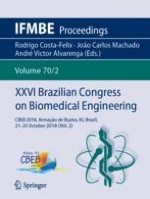This volume presents the proceedings of the Brazilian Congress on Biomedical Engineering (CBEB 2018). The conference was organised by the Brazilian Society on Biomedical Engineering (SBEB) and held in Armação de Buzios, Rio de Janeiro, Brazil from 21-25 October, 2018.
Topics of the proceedings include these 11 tracks:
• Bioengineering
• Biomaterials, Tissue Engineering and Artificial Organs
• Biomechanics and Rehabilitation
• Biomedical Devices and Instrumentation
• Biomedical Robotics, Assistive Technologies and Health Informatics
• Clinical Engineering and Health Technology Assessment
• Metrology, Standardization, Testing and Quality in Health
• Biomedical Signal and Image Processing
• Neural Engineering
• Special Topics
• Systems and Technologies for Therapy and Diagnosis
